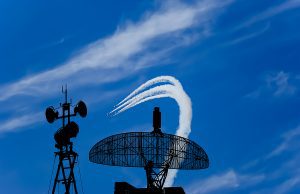Revolutionary Advances in Defense Technology
On today’s battlefield, the difference between success and failure often comes down to who can gather and interpret information faster and more accurately. Defense systems must operate in faster, more complex, and more contested environments than ever before. Traditional surveillance and target detection methods can no longer keep pace with evolving threats. Militaries and defense contractors across the globe are racing to develop technologies that can meet the demands of this new era.
Electronic defense applications have seen remarkable leaps in recent years, driven by the need for sharper situational awareness, longer-range surveillance, and quicker, more precise target detection. Advancements in radar, lidar, infrared, and acoustic sensors are not just upgrades but revolutionizing how defense forces operate, protect, and respond in real time.
The Evolution of Radar Systems
Radar technology has long been the backbone of modern defense systems and has been used for everything from air traffic control to missile defense. Traditional radar systems, however, were often large, power-hungry, and limited in resolution.
Today’s radar systems are smaller, lighter, and significantly more capable. Active electronically scanned array (AESA) radar technology, for example, allows beams to be steered electronically without moving parts, enabling faster detection and tracking of multiple targets simultaneously. These systems can detect threats at much greater distances and in harsher conditions, providing earlier warning and better protection.
In addition, advances in low-probability-of-intercept (LPI) radar designs help systems operate without easily being detected by enemy forces. LPI radar technology allows defense teams to maintain a tactical advantage, gathering valuable intelligence without losing their position.
Radar’s versatility has also expanded. Ground-based systems, naval platforms, aircraft, and even handheld units benefit from the latest developments, offering a seamless coverage network across land, air, and sea.
The Rising Power of Lidar
Once primarily associated with autonomous vehicles, Lidar finds a strong foothold in military applications. Using laser light to measure distances with incredible precision, lidar provides highly detailed 3D maps of surroundings. This is especially valuable for navigating complex environments, identifying threats hidden by terrain, and supporting urban combat operations.
Lidar systems offer several advantages for defense:
- Extremely high resolution and accuracy.
- Capability to detect small, low-signature objects like drones.
- Enhanced situational awareness in all weather conditions.
- Faster decision-making by creating detailed real-time maps.
Lidar complements radar by providing close-range detail that radar might miss, giving soldiers, pilots, and commanders a complete and immediate understanding of their environment.
Recent improvements in solid-state and hybrid lidar-radar systems promise even greater durability, extended range, and affordability, helping to expand deployment across a broader range of platforms.

Infrared Sensors: Seeing the Unseen
Infrared (IR) sensors are another cornerstone of modern defense systems, offering the ability to detect heat signatures emitted by people, vehicles, aircraft, and machinery. Unlike visible light, infrared radiation penetrates darkness, fog, and smoke, making IR sensors indispensable for surveillance and targeting operations.
Recent innovations have dramatically improved infrared sensor capabilities. Modern IR detectors offer higher sensitivity, sharper image resolution, and longer operational lifespans. Some newer systems even combine multiple infrared bands—short-wave, mid-wave, and long-wave infrared—into a single sensor array, allowing for superior detection of objects that might otherwise blend into the background.
This enhanced sensitivity not only helps spot concealed threats but also contributes to better identification and classification of targets, reducing the risk of misidentification in high-stakes situations.
Infrared advancements are particularly valuable for perimeter defense, search-and-rescue missions, precision-guided munitions, and missile defense systems, where seeing first and striking fast can change the outcome of an entire operation.
Acoustic Sensors: Hearing What Can’t Be Seen
In environments where visual detection is limited or impossible, acoustic sensors offer a vital advantage. These sensors capture and analyze sound waves, detecting subtle cues like engine noise, footsteps, or gunfire. Acoustic arrays can triangulate the location of sound sources, providing valuable intelligence even in complete darkness or obstructed terrain.
Defense applications for acoustic sensors continue to grow. They are used for:
- Underwater surveillance to detect submarines or unmanned underwater vehicles.
- Ground-based systems to locate snipers or artillery positions.
- Airborne platforms to detect incoming threats based on sound signatures.
- Urban monitoring to enhance security and threat detection.
Recent developments have improved acoustic detection’s range, accuracy, and speed. Smart algorithms now filter out background noise and distinguish between different types of sounds with remarkable accuracy, helping defense forces respond faster and more effectively.
As acoustic sensor networks grow more advanced, they are increasingly integrated with radar, lidar, and infrared systems to create a layered, multi-sensor approach to defense.
The Importance of Integration and Real-Time Data
While individual sensors are becoming more powerful, their greatest strength lies in their integration. Modern defense systems bring radar, lidar, infrared, and acoustic data together into unified platforms, providing a complete operational picture in real-time.
Advanced processing algorithms, artificial intelligence, and machine learning techniques allow these platforms to analyze massive amounts of sensor data quickly and accurately. By merging information from multiple sources, defense systems can filter out false positives, recognize patterns, predict movements, and support faster, smarter decision-making.
This integrated situational awareness is the foundation of modern electronic warfare, helping commanders understand not just where a threat is but what it is doing and what it might do next.
Speed is life on the battlefield. The ability to gather, process, and act on information faster than an adversary defines modern military superiority.
Innovation Driving the Future of Defense
The defense industry is pushing the boundaries of what sensors can achieve. Ongoing research leads to lighter, more energy-efficient systems that can be deployed on smaller platforms—advances in quantum sensing promise to further revolutionize detection capabilities, offering unprecedented sensitivity and precision.
The demand for rugged, reliable components continues to grow. Defense technology must operate in extreme conditions—from the bottom of the ocean to the edge of space—and still perform flawlessly. Systems must resist shock, vibration, moisture, extreme temperatures, and electromagnetic interference.
The future of defense technology will be shaped by companies that can design and deliver components that meet these challenging demands while embracing innovation at every step.
Powering Next-Generation Defense Technology
The advancements in radar, lidar, infrared, and acoustic sensors are not just changing the defense tools—they are redefining modern military operations’ strategies, tactics, and expectations. Staying ahead of evolving threats requires precision engineering, reliable manufacturing, and an unwavering commitment to quality and performance.
At Levison Enterprises, we understand the demands placed on defense technology. Our experienced team is proud to deliver rugged, reliable electronic assemblies that meet the highest standards. Whether you need custom-built systems or support for complex manufacturing projects, we are ready to help you power the future of defense. Contact Levison Enterprises today to find out how we can support your next innovation.
Start Your Quote Now!